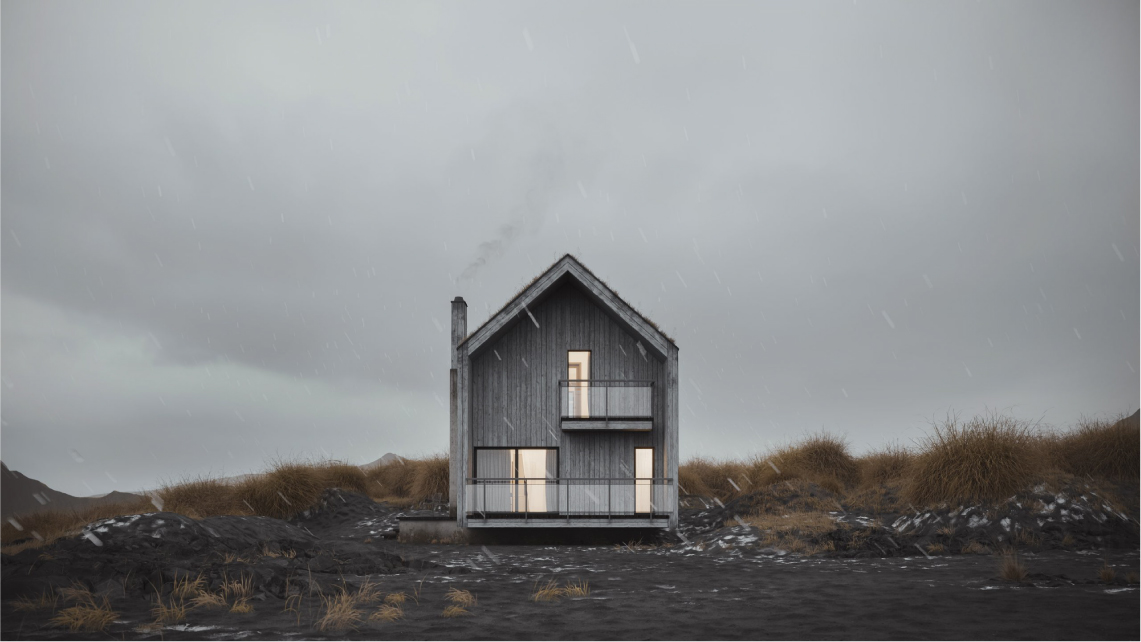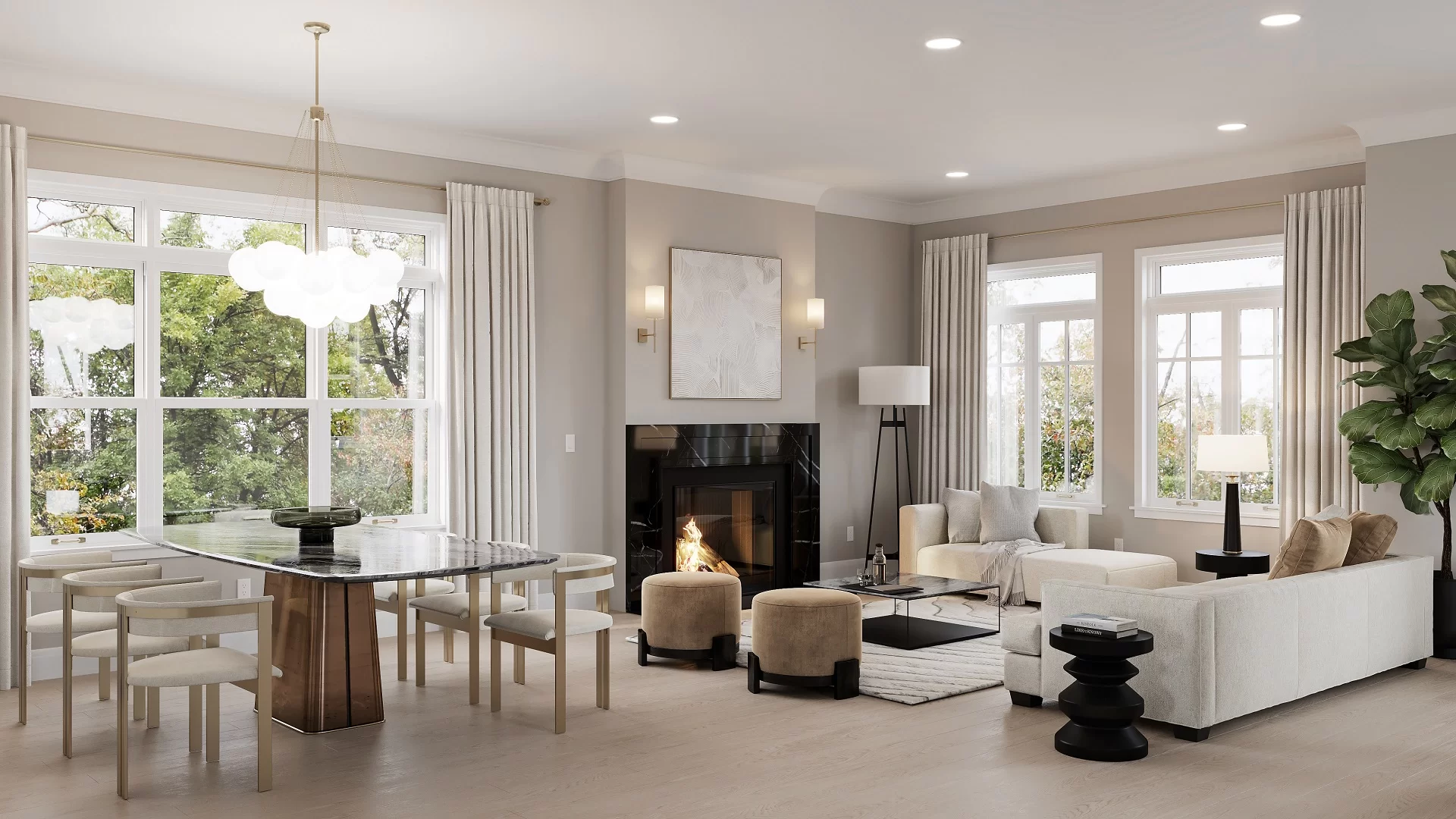There are many criteria that determine the quality of 3D architectural rendering, and they are different for every type of it. However, there are some universal rules that work both for exterior and interior images. First of all, all the objects in a scene must look natural. They need to have precise geometry, accurate size, and high-resolution photorealistic textures. At the same time, small imperfections are what makes the pictures look truly realistic, as there are no perfect objects in the real world. So, there should be a place for such details too.
Then, lighting and shadows should look realistic as well. Firstly, there should be no spots in an image that are too bright or too dark. Secondly, the look of the objects must correlate with the placement and settings of light sources in a scene. Meaning, some surfaces will absorb the light, some will reflect it, and the others will transmit it. Just like in a photo.
Speaking of exterior rendering quality, it’s also important that the main object in an image visually dominates the space. This means the background of a 3D render should only complement it, not compete with it. And the angles and views mustn’t be distorted because it makes the objects look disproportionate. Moreover, 3D scenes must be consistent down to the tiniest details. For instance, clothes on people in the picture must correspond to the weather in it.
For getting a quality interior 3D rendering, one should make sure that there’s no intersection of geometric objects and that none of the interior elements are floating in the air. Those are the minimum requirements a 3D artist must comply with. Apart from that, one needs to pay attention to the furniture and decor in a scene. Namely, pieces of furniture should be scaled according to their real-life proportions. And decor should only subtly add to the atmosphere without cluttering the space. Plus, any patterns on the objects must be transferred carefully according to their dimensions and shape.





